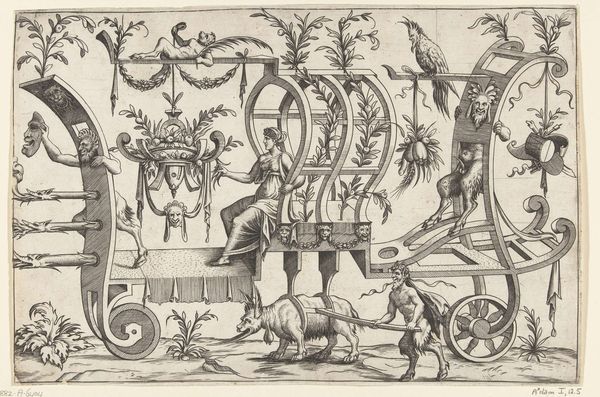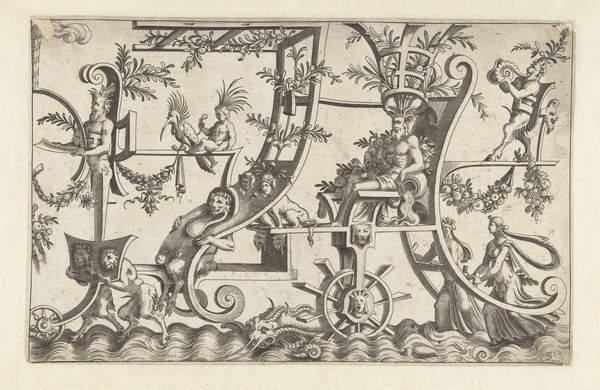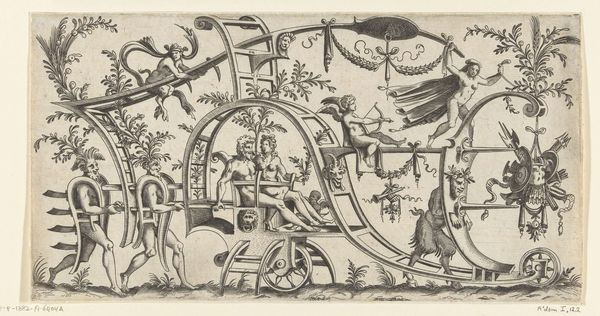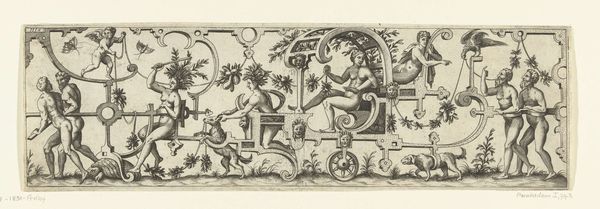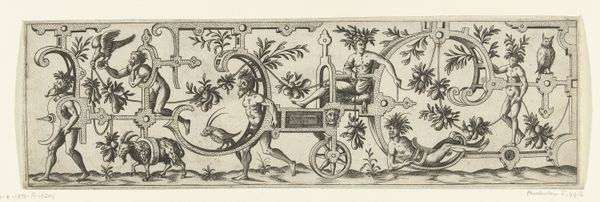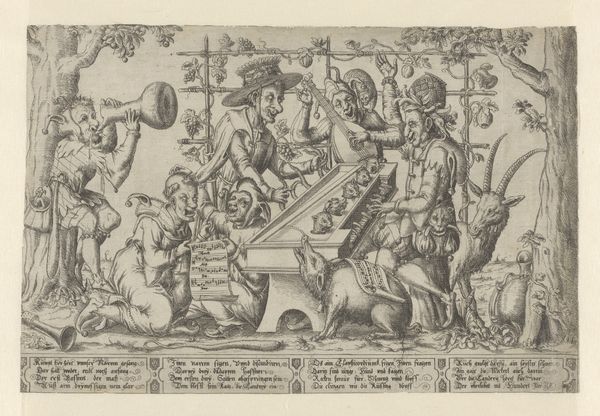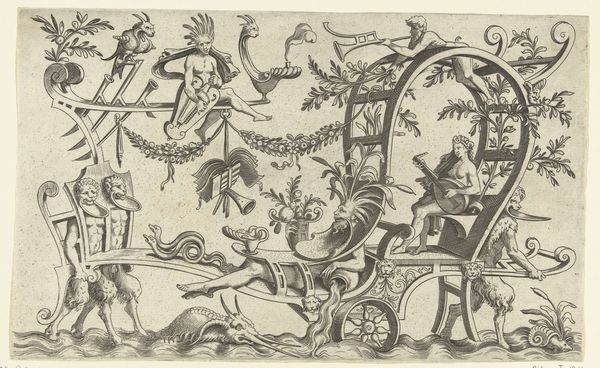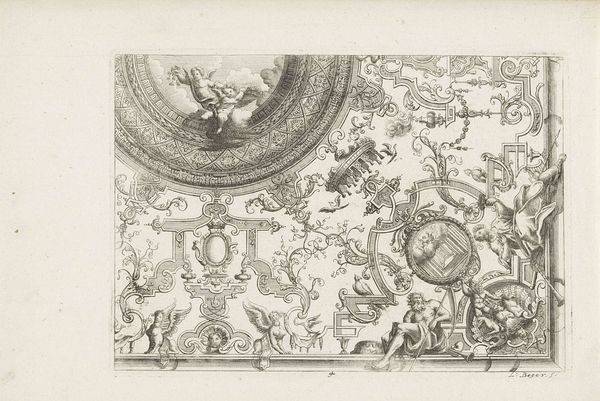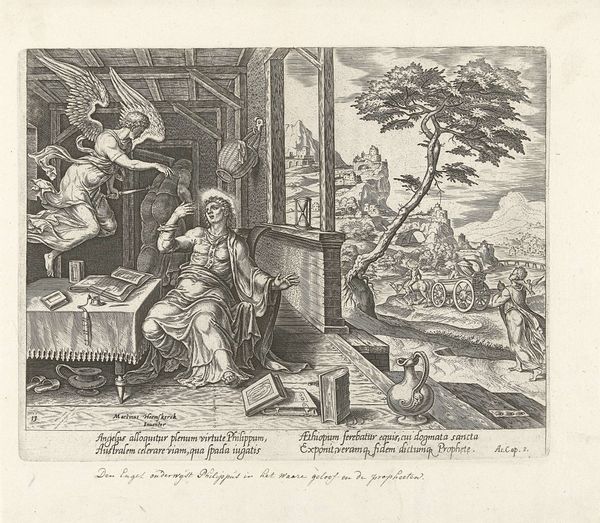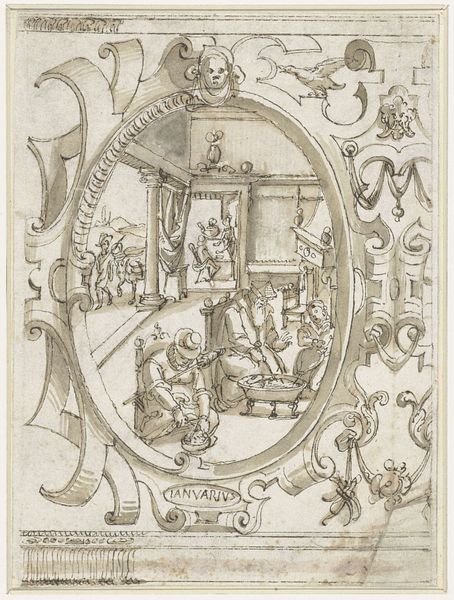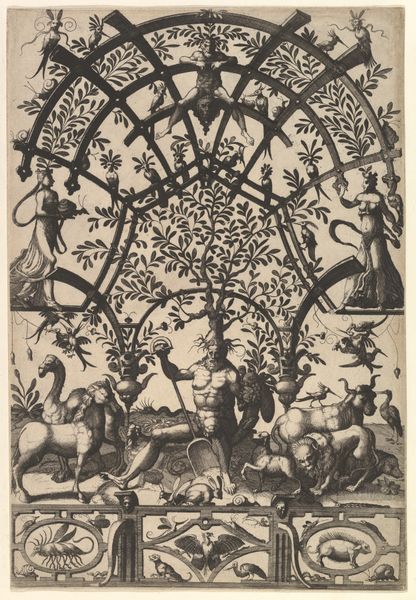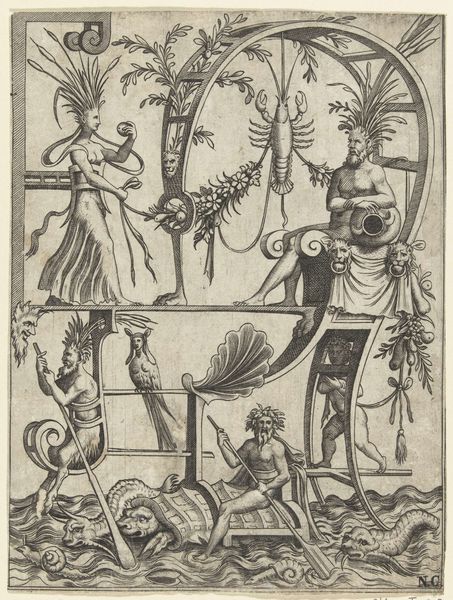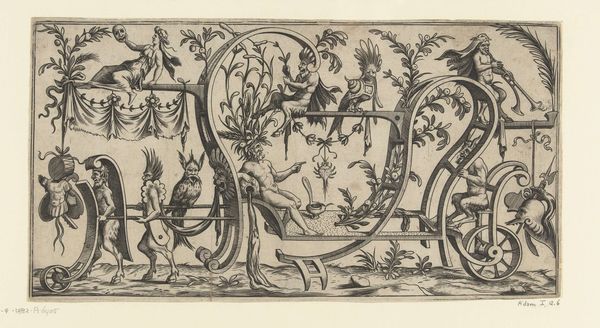
print, engraving
#
pen drawing
# print
#
figuration
#
11_renaissance
#
line
#
history-painting
#
northern-renaissance
#
engraving
Dimensions: height 160 mm, width 250 mm
Copyright: Rijks Museum: Open Domain
Curator: Let’s turn our attention to this striking print, titled "Triomfwagen getrokken door een sater en twee stieren," created around 1550 by an anonymous artist. Editor: My first impression is a sense of structured chaos. The engraving is incredibly detailed, almost to the point of being overwhelming, with this bizarre mix of classical and grotesque elements. Curator: Indeed, the piece utilizes strong lines and dense hatching, typical of Northern Renaissance engraving, to build up texture and form. Notice how the artist has rendered the musculature of the satyrs and the oxen; there's a real commitment to anatomical accuracy, juxtaposed against the fantastical elements of the triumphal chariot itself. Editor: Absolutely, and it's the symbolism that really grabs me. We have satyrs, creatures associated with wild abandon and the Bacchic rituals pulling this wagon. It feels like a representation of the struggle between instinct and reason, doesn't it? Curator: I agree. And if you look at the structural framework, you'll notice a recurring motif. The garlands, the decorative heads... all work to unify the disparate parts of the composition, suggesting an underlying order even amidst the seeming chaos. The way that is achieved, structurally speaking, brings unity of form to mind. Editor: Those grotesque heads, though – leering out from the front of the wagon, that sends a very specific message of what happens to enemies. And there's a distinctly dark side to the whole idea of the "triumph," reminding us of the subjugation and violence that often underpinned these celebrations. The imagery has definite connotations and evokes those aspects of "triumph," even if indirectly. Curator: That tension between the ideal and the real, the beautiful and the grotesque, is key here. And it’s that precise, rigorous mark-making within that visual structure which really defines this. Editor: Looking closely reveals a depth of understanding in classical mythology, of course, but also acknowledges a rather pessimistic vision of the human condition that persists in Northern Renaissance art, wouldn't you say? A kind of memento mori element within this triumphal imagery. Curator: Yes, in essence the structured framework carries these symbols as part of a precise composition and delivers it as such. A rather intriguing piece when considered in that vein, indeed. Editor: I think, in its unusual design and combined darkness, it gives us a rather nuanced perspective of its time.
Comments
No comments
Be the first to comment and join the conversation on the ultimate creative platform.
